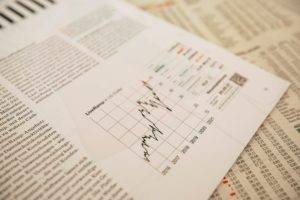A set and forget, or buy and hold, portfolio is a classic approach for a long-term investor. It is where we establish a long-term asset allocation strategy and respect our approach over the long haul. What I am about to share with you is based on industry best practice, academic research and, of course, my own experience working with long-term investment portfolios.
Getting started
Building a portfolio from scratch is an iterative process. Ideally, you should begin with a core position from which you should build. This can be either a managed multi-asset portfolio (which is often the ideal starting point) or a broad index tracker.
For the sake of simplicity, let’s start with an MSCI World index fund – a tracker fund that will perform in line with the global stock markets. This will allow us to get diversified exposure to equities – the cornerstone of almost all long-term investing strategies. Very small portfolios, or clients that are completely new to investing and that want to start small, may consider placing 100% of their portfolio in this one position (at least to get started). This is a good way to begin your investment journey. When you are ready to diversify – if your portfolio is large enough, this should be straight away – we will add exposure to other international asset classes.
When it’s done correctly, the end result is a low-cost portfolio with very strong diversification that will take advantage of global market opportunities.
If we take the MSCI World as the basis for this portfolio, we have a strong foundation. Since 1978, the average annual return of the MSCI World is a remarkable 11.14%. Therefore, if you had invested just €10,000 back then, it would now be worth just over €1m. Yes, that’s correct – you would have become a millionaire from just a €10,000 investment.
Diversification
Sounds appealing, right? There is still considerable room for improvement. This does not account for volatility and sector risk, and therefore we should be looking to further diversify our position. The first way to do this is by adding exposure to value stocks – stocks that are generally undervalued by the market and that provide more stable returns. This will reduce a marker known as “beta” (an investment theory term that measures volatility). This is particularly necessary for investors with low capacity for loss or that are particularly risk averse. High-risk investors that are happy accepting volatility, and that view it as an opportunity, may prefer to skip this step.
Next, we’ll add exposure to other asset classes. Namely: property, fixed income and commodities/gold. We can do this through ETFs or managed funds. The aim here is to get exposure to different asset classes that carry weak correlation to our core portfolio (which in the majority of cases will be equities).
The level to which we will diversify inside each asset class depends on the size of the portfolio. Generally, the larger the portfolio the greater the need to diversify within each asset class. For example, fixed income assets would separate out into government bonds and corporate bonds (and then by geography, duration, creditworthiness…), property would separate down into commercial and residential real estate etc.

Putting it all together
Sounds complicated? It can be. It is for that reason that I (and my team) are able to add value to our clients’ portfolios – by understanding how to correctly build their asset deployment strategy and adapting it to ever-changing market conditions and personal objectives. Whilst this does come at a cost, our clients rest assured that their financial future is in safe hands. What’s more, working with a competent asset manager that you can trust will almost invariably lead to improved returns and more predictable financial planning – well worth the ongoing management fee.
Are you missing out on tax planning or investment opportunities?
I am currently offering a free financial review to new clients. Click the button below to book your session.

